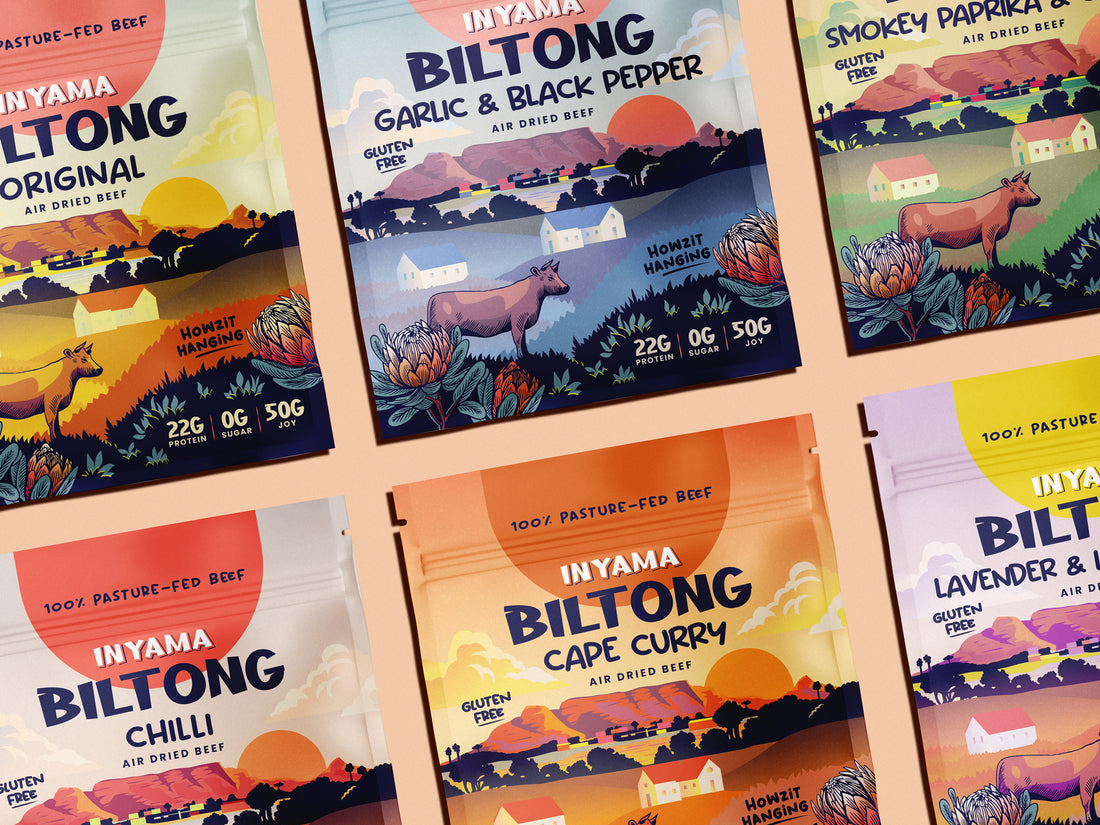First things first.. WHAT IS BILTONG?
If you're reading this article, chances are you've heard the word and it has peaked your curiosity. Well, we are here to help. So let's start with the pronunciation.
Easy, it's 'Bil', like:"excuse me Sir, can I get the bill, please."
And 'tong', like:"hey man, that's a really nice tong you've got there!" (Please, only ever use this one when you're at a Braai or BBQ).
We've heard some pronunciations that are sure to offend every South-African ever.
Where does it come from?
Geographically, from South-Africa and it dates back to the 1650's after the Dutch established the first colony in what is now know as Cape Town. The settlers would rub salt into cuts of meat and hang it from trees in the warm African air. Once dried it would make the perfect travelling food for their long expeditions. Traditionally a variety of meats and cuts were used for Biltong. From Beef to Ostrich and most things in between. Today it is more common to use Beef, however in South-Africa the market for Kudu, Springbok, Gemsbok and other antelope species is still very strong.
Over time, recipes have changed and methods altered, but we believe that doing things in the traditional way is best. That being said, we don't hang any of our meat from trees, we're a bit more fancy than that.
How do we make our Biltong.
This might come as a bit of a shock, but we've opted to keep the process as simple as possible. We believe that the best things in life don't always have to be the most complicated, and that goes especially for our Biltong.
First is the Beef. The quality of the Beef determines the quality of the Biltong. We have partnered with Farm Wilder who source their beef from farms that are conserving and restoring the old and wildly diverse pastures that support much of our rarest and most endangered wildlife, from cuckoos through to marsh fritillary butterflies.
We believe that the best beef comes from the richest environments, where the cattle can grow slowly on a diet of herbs, legumes, grasses and tree browse. In return, the animals play a crucial role in creating diverse and resilient ecosystems, and regenerating healthy, carbon rich soils.
Next are the Spices. Great flavours don't require a plethora of spices. We believe in keeping it minimal, which is why we use a blend of Coriander, Sea Salt, Black Pepper, Dried Garlic and Dried Onion, perfectly balanced to give you a rich flavour along with a lovely meaty taste.
The Methods. Back in the day when the Dutch used to do it, Beef would be cut into strips, salt would be rubbed into the meat and it would be hung from a tree till it was dry. Today, health and safety don't really like those methods so much, so we use custom built dehydrators that regulate the temperature and airspeed to ensure a constant flow of air that dries the meat out slowly. Temperatures in the box can range from 21 - 27*C, depending on the season. Those temperatures along with the steady airflow allow the meat to dry in 4 - 7 days.
Then what? After the meat has dried in the box (we aim for 55% moisture loss), we used our electric Biltong slicer, aptly named El Choppo, to slice the whole slabs into thin shavings. Everything is packaged according to weight and then sealed, ready to be shipped out.
What makes us different then? The process is a simple one, but one that we take a lot of pride in. As a South-African I can tell you that Biltong is something we hold in very high regard, so you can trust that Inyama Biltong is here to give you the best you've ever had.
If you haven't tried Biltong yet, we recommend you give it a go. Head over to our Shop and pick up some meaty yum yums. Our Taster Box has one of each of our flavours, so there is bound to be something for you!

